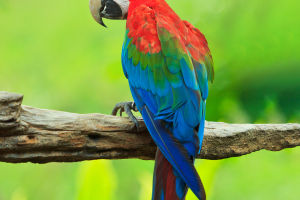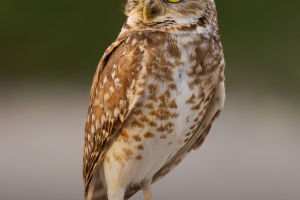The Red-headed Woodpecker is a small to medium-sized species of woodpecker that inhabits temperate regions of North America, including the United States, Canada, Greenland, Bermuda, Saint Pierre and Miquelon, and the transitional zone between North and Central America within Mexico.
They breed in southern Canada and throughout the eastern and central United States.
The Red-headed Woodpecker's body displays three distinct colors: black back and tail, red head and neck, and predominantly white underparts. Its wings are black with white secondary feathers. Both adult males and females have identical plumage. Juveniles have similar coloring but with some brown mixed in. Non-birdwatchers often confuse the Red-headed Woodpecker with the Red-bellied Woodpecker, which has some red on its belly.
Red-headed Woodpeckers feed on insects in the air or the ground and consume fruits from trees. They are omnivorous, eating insects, seeds, fruits, berries, nuts, and even the eggs of other birds, with about two-thirds of their diet coming from plants. They nest in tree cavities, utility poles, or dead trees. They lay eggs in early May and take about two weeks to hatch.
They can raise two chicks simultaneously each breeding season. Northern populations migrate southward, arriving in late April, most arriving during the breeding season and departing before winter starts in late October.
While the Red-headed Woodpecker was once plentiful, its population sharply declined in 1966 due to competition with European Starlings for nesting sites and clearing dead trees. Many northwestern states in the United States no longer have habitats suitable for Red-headed Woodpeckers. For instance, in Ohio, there have been only sporadic sightings of Red-headed Woodpeckers, and they cannot sustain themselves.
The Red-headed Woodpecker is currently listed as a species of concern in Canada and an endangered species in the United States due to habitat loss, leading to a significant decrease in their numbers.
Listen! A rhythmic "tap-tap" sound is coming from the forest as if someone is continuously hammering wood. That's the "forest doctor" woodpecker diagnosing trees! The trunks of some trees in the wild are covered with dense small holes. These evenly spaced small holes look like a honeycomb from afar. Even more puzzling is that each hole contains a seed as if growing out of the trunk.
This isn't the mischief of mischievous children but the work of woodpeckers. As is well known, woodpeckers peck trees to feed on wood-boring beetles, termites, and other pests, hence their nickname "tree doctors." However, some woodpeckers also cause extensive damage to trees, even killing them by "gutting" them.
Why would woodpeckers, known as "tree doctors," also damage trees? Apart from catching insects, what other purposes do woodpeckers have for pecking trees?
1. Courtship and Nesting: Woodpeckers build nests and raise their offspring in trees.
2. Sap-feeding: Sapsucker woodpeckers peck holes in trees to feed on sap.
3. Food Storage: Acorn woodpeckers, for example, store seeds in crevices in trees.
Do woodpeckers ever fall off when climbing trees?
No, they don't. Woodpeckers have four toes on each foot, with two toes facing forward and two facing backward.
Their toes are short, thick, and powerful. Their claws are curved and sharp, aiding in gripping tree trunks and maintaining balance, allowing them to move vertically on tree trunks. Woodpeckers' tail feathers are wedge-shaped, with stiff shafts that can easily support their bodies while pecking.
With their constant "tap-tap" pecking, wouldn't woodpeckers get dizzy from hitting their heads so much?
No, they don't. Woodpeckers have numerous sponge-like hollow structures in their skull, which absorb shock and provide strength.
When woodpeckers peck at trees, their heads accelerate, causing the cerebrospinal fluid around their brains to move back and forth within the skull, which could lead to various problems. Therefore, woodpeckers have evolved to have smaller and smoother brains, narrower spaces between the skull and the dura mater, and as little cerebrospinal fluid as possible, minimizing the impact of rapid movements on their brains.
What if the cunning pests hide deep within the tree?
Woodpeckers have straight, pointed bills to chisel away at the bark. Woodpeckers also have specialized long tongues (normally stored within the skull) that can extend and retract, reaching quite far.
Their tongues are tough and can absorb shock while pecking. The tips of woodpeckers' tongues are equipped with short hooks, ideal for extracting wood-boring pests from inside trees.


